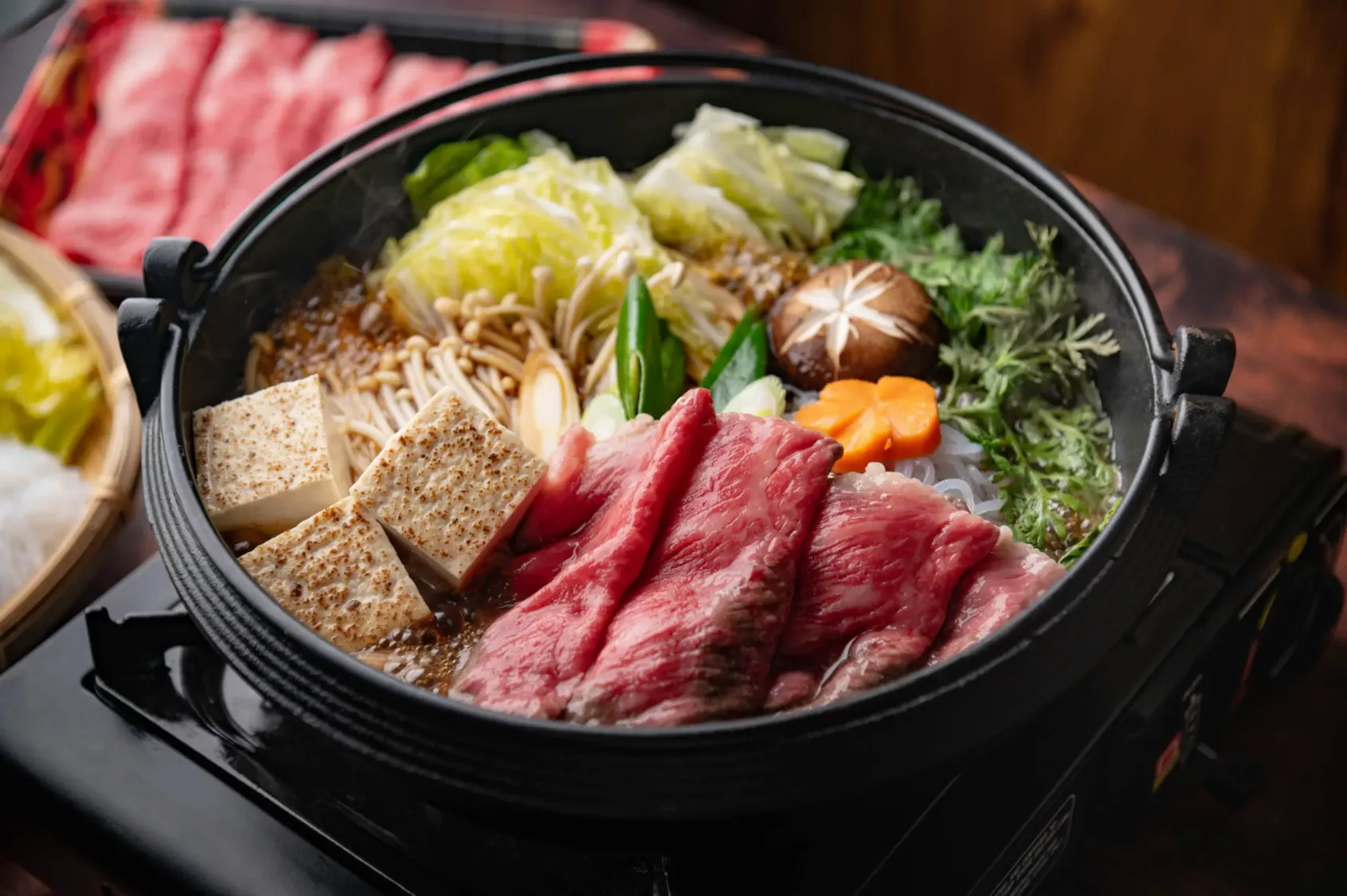
Sukiyaki
Hot pot dish with thinly sliced beef, vegetables, and noodles in sweet soy sauce broth.
Ingredients
- •Sliced beef
- •Tofu
- •Napa cabbage
- •Shirataki noodles
- •Soy sauce
- •Sugar
- •Sake
Instructions
Prepare Broth
Mix soy sauce, sugar, and sake for broth
Cook Ingredients
Simmer meat and vegetables in broth
Serve
Dip cooked ingredients in beaten egg before eating
Sukiyaki is a luxurious Japanese hot pot dish that perfectly embodies the country's communal dining culture. At its heart, it features thinly sliced premium beef and an assortment of vegetables cooked in a sweet and savory broth made with soy sauce, mirin, and sugar.
This beloved dish gained popularity during the Meiji period (1868-1912) when beef consumption became more widespread in Japan. Previously, due to Buddhist influences, meat consumption was largely taboo. The name "sukiyaki" is believed to come from "suki" (spade) and "yaki" (grilled), referring to the original method of cooking meat on farm tools.
Traditional sukiyaki is prepared in a shallow iron pot called a nabemono. The cooking process typically begins by searing the beef, then adding the sweet and savory broth along with vegetables like napa cabbage, mushrooms, and tofu. Shirataki noodles are often added for texture, while green onions provide a fresh accent.
Regional variations exist throughout Japan. The Kanto (Tokyo) style begins with cooking the meat in the sauce, while the Kansai (Osaka) style starts by searing the meat in beef fat. Some versions might include different vegetables or even alternate meat choices, though beef remains the most traditional option.
In Japan, sukiyaki is considered a luxury dish often enjoyed during special occasions or family gatherings. The traditional way of eating involves dipping the cooked ingredients in beaten raw egg before consuming, which creates a rich, creamy coating. However, those concerned about raw egg consumption can skip this step.
While sukiyaki is undeniably delicious, it's worth noting that it can be quite rich in calories and sodium. The fatty cuts of beef and sweet sauce make it a relatively indulgent meal. Those with dietary restrictions should be aware that the traditional broth contains both soy sauce (gluten) and sugar, though these ingredients can be modified for specific dietary needs. Despite these considerations, sukiyaki remains a nutritious option, providing a good balance of protein from the beef, fiber from the vegetables, and various vitamins and minerals.
